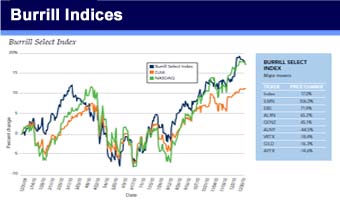 Merck is paying $24.50 per share in cash to acquire Idenix Pharmaceuticals for its three hepatitis C drugs in clinical development in a deal valued at $3.85 billion. The price represents a 238 percent premium to Idenix’ closing price before the deal was announced.
Merck is paying $24.50 per share in cash to acquire Idenix Pharmaceuticals for its three hepatitis C drugs in clinical development in a deal valued at $3.85 billion. The price represents a 238 percent premium to Idenix’ closing price before the deal was announced. With the acquisition, Merck muscles into a space that has a clear winner at the moment—Gilead Sciences’ Sovaldi—and several other challengers, including Janssen’s Olysio and AbbVie’s experimental drug that recently received priority review authorization by the U.S. Food and Drug Administration. Sovaldi’s launch, with $2.3 billion in sales in the first quarter, was the best launch ever. Gilead is working on a three-drug combination pill it hopes to launch in the fall.
Merck plans to quickly develop its own three-drug combination pill that can cure patients of hepatitis C viral infection in as little as a month. It already has two of those three drugs, an NS5a inhibitor and a protease inhibitor, which it said it planned to test in combination with Sovaldi, a nucleoside prodrug, to show that it could shorten the treatment time. Idenix provides Merck with its own “nuke.”
“Idenix has established a promising portfolio of hepatitis C candidates based on its expertise in nucleoside/nucleotide chemistry and prodrug technologies,” says Roger Perlmutter, president of Merck Research Laboratories. “Idenix’s investigational hepatitis C candidates complement our promising therapies in development and will help advance our work to develop a highly effective, once-daily, all oral, ribavirin-free, pan-genotypic regimen that has a duration of treatment as short as possible for millions of patients in need around the world.”
Idenix has three HCV drug candidates in clinical development: two nucleotide prodrugs and a NS5A inhibitor. These novel candidates are being evaluated for their potential inclusion in the development of all oral, pan-genotypic fixed-dose combination regimens. It was also testing two nucleotide polymerase inhibitors but abandoned them earlier this year after the U.S. Food and Drug Administration put a hold on the trials. These compounds were similar to those abandoned by Bristol-Myers Squibb/Inhibitex after they caused severe adverse events in several patients.
Merck’s HCV medicines in development include the combination of MK-5172, an investigational HCV NS3/4A protease inhibitor and MK-8742, an investigational HCV NS5A replication complex inhibitor. The combination has received the FDA’s Breakthrough Therapy designation. In April began late-stage clinical trials for MK-5172/MK-8742 to evaluate the combination with and without ribavirin in various genotypes and across a broad range of patient populations with chronic HCV.
With an estimated 170 million people worldwide infected with hepatitis C, Merck believes there is plenty of room and time to grab a significant portion of the market share. There will also be a need for new drug combinations that are effective against all the strains of hepatitis C. Merck also believes its combo drug will shorten the time to a cure to just two months. The Sovaldi treatment regimen is 12 weeks, or 3 months.
When Gilead paid $11 billion for Pharmasset in November 2011 for its oral hepatitis C drug that became Sovaldi, many people thought it was paying too much. Gilead’s market capitalization at the end of 2011 was $30.7 billion. Two years later, its market capitalization had quadrupled to $123.6 billion, much of it due to the anticipated uptake of Sovaldi.
It will be interesting to see how the Idenix acquisition plays out for Merck. The companies expect the transaction to close in the third quarter of 2014.
June 13, 2014
http://www.burrillreport.com/article-merck_buys_idenix_for_3_85b.html


